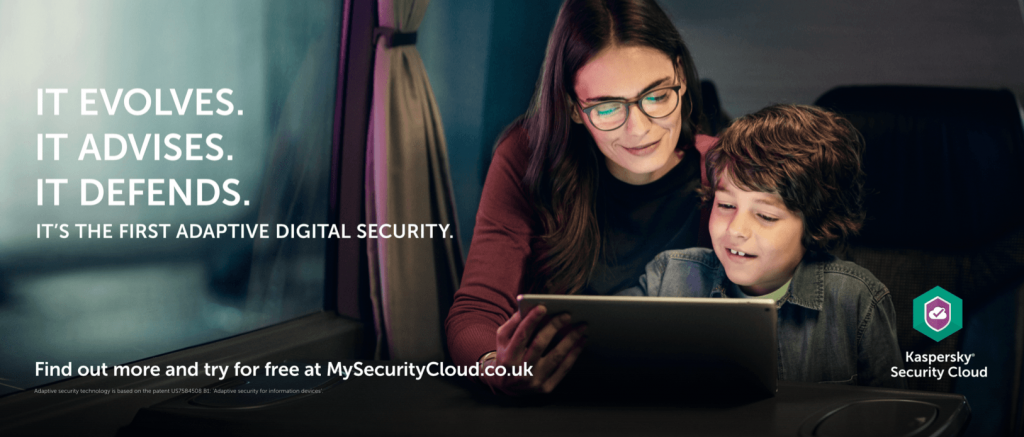It’s 20 years since the enduring image of a big beige PC sitting on a desk in your house was a reality. It’s still quite fresh in my memory that I had a 19″ CRT monitor in my living room blotting out the sunlight! Do you remember how we would carve out time to sit at it? Write a letter to someone; try this ‘Internet thing’ people were talking about or just play Solitaire – we all knew the destination and the single tool to do these things. And we all knew that you had to have Anti-Virus software on it too. Simple, eh?
I like to call this ‘destination computing’.

Nowadays, the sheer notion of the destination computing era seems quasi-ridiculous to most of us. Our computing these days is bite-size, frequent and varied. The information we access, transmit and share by-and-large sits in the cloud now, not on the devices we use. Although we may not consider ourselves to be using the cloud, it is exactly what we use, every day and every time we access our mail, calendar, files, bank or communicate via social media. We want access to these services, wherever and whenever from any device to hand and it’s because of computing in these clouds that it is possible.
I like to call this ubiquitous computing as computing experiences follow us every day through a range of different moments.
So, what other differences are there between destination computing and ubiquitous computing?
Security. The nature of ubiquitous computing means we are often not exercising good digital security practices. This is resulting in cybercriminals having a ball at your expense – quite literally a financial expense for some. The three main reasons for this are
- We tend to trade convenience over security
- There’s no simple, easy to use solution that will allow us to connect, share, spend and protect our interconnected digital lives
- It’s never been easier to connect, click, communicate, send and share but it’s largely at the expense of good security practices, especially when we’re on-the-go
We all understand these reasons but you may recognise some of the impacts they have to our daily lives:
- Connect to an open often public Wi-Fi network that may not be as secure as we’d like
- Share log ins, passwords or bank details in a text message or similar message service
- Use the same password for most accounts
- Use passwords that are not hard to guess or decrypt as it’s personal to you, for example, your birthday or postcode
- Your password is ‘password’ or ‘123456’ – the two most popular passwords in the world
- You hear and read lots in the media about cybercrime, data theft, online vulnerabilities but don’t think it’ll happen to you and/or have little or no idea what to do about it
- You do not know who and what is connected to your home network
- Family members see you as the go-to person in the family to help them with their technical issues
- You have no idea what your kids are up to on their devices
- You simply can’t get your head around managing all the devices and security needs. So, you don’t or you try to do what you can, often in vain
These kinds of threats and gaps in our security are well beyond what Anti-Virus software can do for us but don’t worry, there’s a new security solution in town. It’s called Kaspersky Security Cloud.
It’s been designed especially to serve and protect you in this ubiquitous computing era by adapting to your behaviour and the threats around you, automatically.
It’s the first adaptive security service and the only security you’ll need. Using our patented* Adaptive Security technology, Kaspersky Security Cloud will adapt to your behaviour online, automatically offering the right security at the right time.
So how does that relate in a day-to-day situation?
Let’s consider that you are in a coffee shop and try to connect to the Wi-Fi which is open and has a weak password (if it has a password at all). You know you shouldn’t use it but your cellular data plan that month looks a little low so you connect anyway. Ordinarily, in this scenario you put yourself at risk of cybercriminals intercepting your data. However, luckily, you have Kaspersky Security Cloud on your iPhone (or iPad, notebook or Android device) and it responds automatically by prompting you to secure and encrypt the connection. A press of a button later, you are safely connected. It’s that easy. If bad guys try to do anything, all they’ll get is a scrambled bunch of binary data (because it’s encrypted and they can’t decrypt it). Think of this technology as a ‘police escort for your data’.
Kaspersky Security Cloud will conveniently prompt and help you with securing and generating strong passwords automatically, as well as allowing you to set device time or location boundaries for your kids. You can also share your subscription with your family to protect others*, and so much more. Even our best-in-class award-winning Antivirus protection is included for the devices you have, that need it.
The built-in Security Adviser acts like a personal security officer in your pocket (or desktop or notebook**) advising you on a personal level to threats on your device or threats around you like a data breach at a company you use. It will send you a notification of the event, highlight what’s happened, and critically, what you should do about it. No longer will you not know what to do.
It works across all your devices*** and everything is easily managed via the My Kaspersky web portal.
It’s available in two subscription packages, Personal (for you) and Family (for you and your family) and because it’s a service (like a Netflix or Office 365) we’ll be adding new stuff as part of your ongoing subscription.
What’s the cost of all this I hear you say? Well, it costs no more than the best Internet Security we already sell. You choose what suits you best – Kaspersky Total Security or if you recognise yourself in what you just read, Kaspersky Security Cloud.
There you have it. For the first time, security that adapts to you, giving you the right security at the right time. To find out more, click here.
*Benefit of the Kaspersky Security Cloud – Family subscription package
**iOS, Android, Mac OS or Win10
***iOS, Android, Mac OS or Windows. For full technical specifications please visit here and scroll to bottom of page
 Kaspersky Security Cloud
Kaspersky Security Cloud
 Tips
Tips